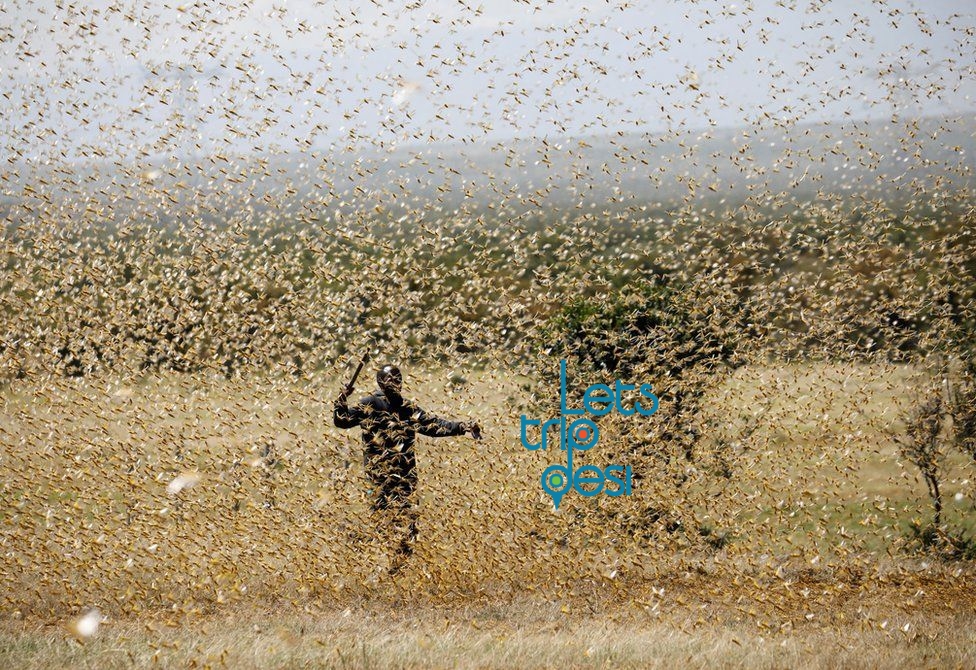The year 2020 is finally coming to an end and thank God for that. From the deadliest virus known to mankind, to forest fires and locust swarms, 2020 is definitely the year our ancestors warned us about. Natural disasters in 2020 will have catastrophic consequences for millions of people across countries by 2020. It will cause not only thousands of deaths, but also tens of billions of dollars in losses. Here are some of the most destructive climate disasters of the year, which have caused millions in damage.
Hurricane in the United States
The United States has been hit by major disasters and the highest economic costs this year. In addition to the pandemic, a record storm damaged their economy. The storm caused more than $ 60 billion in damage. While fires are a natural part of the ecosystem, warmer climates due to carbon emissions affect the extent of these fires.
Earthquakes in Turkey, Caribbean, China, Iran, Russia, the Philippines and India
There are so many earthquakes in 2020 that if I had to sit down and categorize each of them as a natural disaster, the list would not be naturally long. So far, there have been 45 earthquakes on 6 levels on the Richter scale. An earthquake of more than 7 hit Jamaica and Russia the hardest. The earthquake in Turkey claimed 41 lives.
Harmful flooding in Indonesia
On January 1, 2020, floods destroyed the Indonesian capital, Jakarta and some surrounding areas. More than 4 million people have had to flee their homes. Floods caused by heavy rains that hit the city caused further damage as rivers flooded and people drowned in 5 feet deep water. Many locals have been the victims of drowning or landslides, while others have died as a result of electric shock or landslides. About 66 people will lose their lives in this natural disaster in 2020.
Australian Bushfire
At the beginning of December 2019, Australian forest fires showed no signs of slowing or stopping. While most countries celebrate the New Year, Australia is facing one of the biggest natural disasters and many states have declared a state of emergency in January. According to a report published by Australia’s Medical Journey, the Australian fire destroyed an estimated 18.6 million hectares, destroyed more than 5,900 buildings and killed at least 34 people, while more than 400 people died from inhaling the remaining smoke.
Volcano eruption in the Philippines
The Taal volcano is the second most active volcano in the Philippines and its eruption began on January 12 in Luzon, followed by an eruption and ash more than 100 km away. It last exploded 43 years ago. The volcano left behind huge ashes that caused the evacuation of 300,000 people. On 13 February, the National Council for Disaster Risk Reduction and Management (NDRRMC) and the Philippine Institute of Volcanology and Seismology (PHIVOLCS) reported a total of 2,484 volcanic-tectonic earthquakes around the volcano, of which 176 occurred. The Philippines is still happy with the eruption of the volcano and many countries are sending domestic aid.
Floods in India, Japan and China
Surprisingly, six of the ten most expensive events of the 2020 season took place in Asia. Many of these disasters were caused by unusual crashes. The floods, which occurred over several months in China and India, cost and are estimated at $ 32 billion and $ 10 billion, respectively. Due to heavy rains in many parts of Assam, the flood situation is no longer clear. According to the Assam State Disaster Management Authority (ASDMA), a total of 128 villages in eight income circles in Lakhimpur, Dhemaji, Dibrugarh, Darrang and Goalpara districts were affected. It also affects crops and domestic animals.
Antarctica Snow Turns Green
When you think of Antarctica, your mind often creates images of extraterrestrial space with lots of white glaciers, penguins and lazy seals. However, parts of the frozen continent have become green, all thanks to climate change and abundant algae. According to a new study published in the journal Nature Communications, warming and melting snow on the continent can help create algae blooms (rapid increase or accumulation of algae populations) that spread at high altitudes. speed, so back. many “green” areas. In fact, this phenomenon has become so widespread in some places that it can still be seen from space.
Windstorm in Europe
Europe is not only one of the most affected pandemic continents, but also natural disasters in 2020. Hurricanes Ciara and Alex hit the continent, costing nearly $ 6 billion and killing 30 people. What’s worse, extratropic cyclones are expected to hit Europe more often as temperatures rise due to global warming.
Locust Swarms in East Africa and Parts of India and Asia
Millions of desert locusts have invaded 5 Indian states, namely Rajasthan, Gujarat, Punjab, Haryana, Uttar Pradesh and Madhya Pradesh, and the videos are very scary. Deadly grasshoppers, first found in East Africa and then in Pakistan, do not affect humans, but cause damage to crops.
Cyclone Amphan in India and Bangladesh
Cyclone Amphan caused riots in West Bengal and Odisha in May, leaving traces of destruction. The Meteorological Department called the storm a “strong hurricane storm,” which struck the mainland in both states with heavy rain, windshields, and lightning, destroying everything that came. its passage, departure and cooling Visuals around. The supercyclone would kill 12 people in Bengal, while the states also affected electricity supplies and telephone networks.



